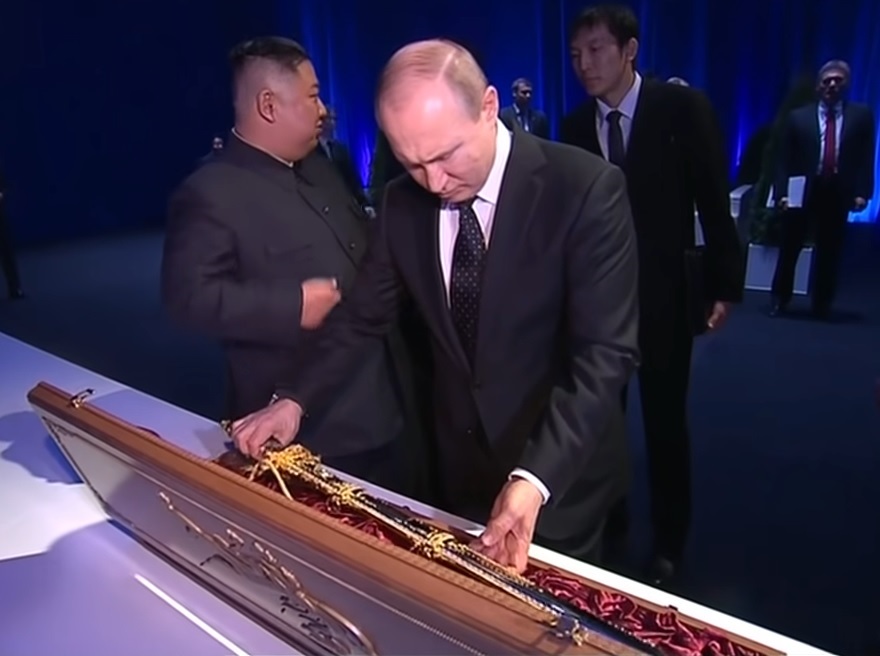
BIRDS OF A FEATHER: THOUGHTS ON PYONGYANG’S LESSONS
FROM THE WAR IN UKRAINE
ALEXANDRE Y. MANSOUROV
October 7, 2022
This report is published under a 4.0 International Creative Commons License the terms of which are found here.
This report is simultaneously published by the Asia-Pacific Leadership Network, Nautilus Institute, and the Research Center for Nuclear Weapons Abolition, Nagasaki University (RECNA).
The views expressed in this report do not necessarily reflect the official policy or position of the Nautilus Institute. Readers should note that Nautilus seeks a diversity of views and opinions on significant topics in order to identify common ground.
The overall objective of the “Reducing the Risk of Nuclear Weapons Use in Northeast Asia” (NU-NEA) project, a collaboration between the Research Center for Nuclear Weapons Abolition, Nagasaki University, Nautilus Institute, and the Asia Pacific Leadership Network for Nuclear non-proliferation and Disarmament, is to reduce and minimize the risk that nuclear weapons will be used in the region by developing better understandings of the processes that could lead to the first use of nuclear weapons and the potential outcomes of such nuclear weapons use. In the first year of this three-year project, the NU-NEA project team identified over 25 plausible nuclear weapons “use cases” that could start in Northeast Asia, sometimes leading to broader conflict beyond the region. These nuclear use cases are described in the report Possible Nuclear Use Cases in Northeast Asia: Implications for Reducing Nuclear Risk1.
On February 24, 2022, not long after the year 1 report was published, the Russian Federation launched what it described as a “Special Military Operation” in Ukraine. The Ukraine conflict, as it has unfolded in the intervening months, has riveted the attention of the world, changed many relationships between countries, and also changed perceptions of warfare. The NU-NEA project team realized that the changes catalyzed by the Ukraine conflict could change the way that nuclear-armed nations, and those nations that might choose to obtain such weapons in the future, think about deploying or using nuclear weapons in Northeast Asia. To address these possible changes in approach, the project team asked experts to provide input on how the Ukraine conflict might have changed the way that policymakers and military planners in each nation in Northeast Asia, plus the United States, think about their nation’s deployment or use of nuclear weapons in the event of escalation of a conflict in Northeast Asia.
In the Policy Forum essay that follows, Professor Alexandre Y. Mansourov provides his analysis of what lessons the Democratic Peoples’ Republic of Korea (DPRK) might have taken, to date, from how the Ukraine conflict has unfolded, and how those lessons may change how and under what conditions the DPRK might choose to deploy or use nuclear weapons if a conflict in Northeast Asia escalates sufficiently. Professor Mansourov argues that the lessons learned from the Ukraine conflict by DPRK leadership may make the DPRK more likely to conclude that having nuclear weapons capability will not necessarily translate to victory in a war on the Korean peninsula, that the results of Russia’s nuclear posturing during the war conflict will make the DPRK less likely to resort to nuclear weapons use, that the DPRK will be more likely to consider and perhaps pursue “nuclear sharing” arrangements with Russia and China, that the DPRK would be more likely to insist on the exclusion of tactical nuclear weapons from any eventual nuclear arms control deal with the United States and the international community, and that the Ukraine conflict may affect how the DPRK thinks about nuclear facilities in both the DPRK and the Republic of Korea as potential targets during conflicts.
1 Available as https://nautilus.org/napsnet/napsnet-special-reports/possible-nuclear-use-cases-in-northeast-asia-implications-for-reducing-nuclear-risk/.
Keywords: Nuclear weapons, deterrence, perceptions, Ukraine, United States, North Korea
Authors’ Profile:
Alexandre Y. Mansourov is Adjunct Associate Professor at the Center for Security Studies at Georgetown University, Adjunct Professor of Korean Studies at SAIS Johns Hopkins
University, Adjunct Professor of Political Science and International Affairs at the Elliott School of International Affairs, George Washington University, and Chairman of Great Falls
Solutions International, LLC.

















